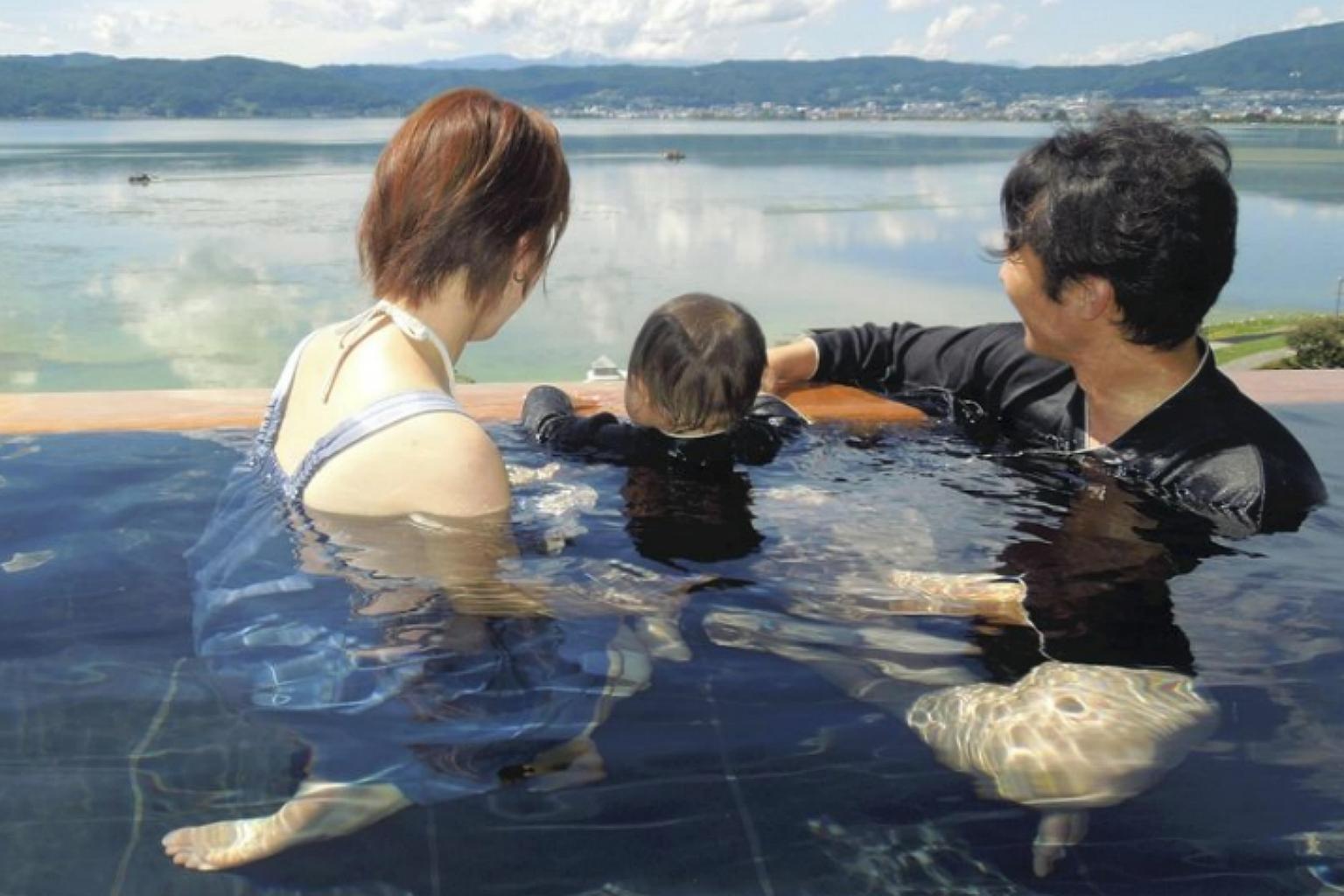More hot spring resorts in Japan allow guests into onsen while clothed
Sign up now: Get insights on Asia's fast-moving developments

A couple soak in a hot spring with their baby in yuami-gi bathing wear at the rooftop open-air mixed bathing area at Sui Suwako inn in Suwa, Nagano Prefecture, with Lake Suwa in the background.
PHOTO: THE JAPAN NEWS/ASIA NEWS NETWORK
Follow topic:
TOKYO (YOMIURI SHIMBUN/ASIA NEWS NETWORK) - While staying at the Sui Suwako hotel in Nagano Prefecture, visitors can enjoy open-air bathing on the rooftop area while admiring Lake Suwa.
However, when they arrive at the entrance of the mixed-bathing area, they would be greeted by this notice: "You are not allowed to bathe naked here."
Instead, Sui Suwako offers guests a free "yuami-gi", or bathing garment - a practice it has employed since opening last year (2016).
The inn is among an increasing number of hot spring resorts in Japan that allow guests to wear a garment while bathing.
This is because Japanese people are increasingly finding it embarrassing to be naked when men and women use the same bathing space.
The change is also for a growing number of foreign visitors who are not used to the traditional requirement that onsen bathers be naked.
"Our rooftop open-air bath is vast, enabling guests to enjoy a panoramic view of Lake Suwa," said Ms Naoko Okamoto, a Sui Suwako employee who is in charge of the bathing area. "However, we have only one bath here, so we've worked out (the idea of requiring guests to wear a yuami-gi) so even those who don't like mixed bathing naked can enjoy this place."
Users of the open-air bath are asked to wash their bodies in their room before using the open-air bath.
"I don't want to take a bath naked with men, but there's no problem if I wear a yuami-gi," said a 31-year-old woman who was visiting.
Meanwhile, Takaragawa Onsen Osenkaku, an inn in Minakami, Gunma Prefecture, lends bathing attire to guests for free - a service that has become known mostly via the internet. The hotel attracts about 10,000 foreign tourists a year.
"Our service is popular among non-Japanese guests who don't use bathtubs like Japanese do but want to experience a Japanese onsen," president Yoshio Ono said.
The Japan Tourism Agency in March last year compiled guidelines - for onsen inns and other bathing facilities - on how to handle various cases involving foreign visitors, under which operators, for example, are encouraged to ask bathers with tattoos to cover the parts in question by putting on proper bathing garments or using tape.
The Public Bath Houses Law and the Inns and Hotels Law stipulate that prefectural governments and ordinance-designated cities establish specific ordinances on morals and hygiene at onsen and public bathhouses open to the general public.
However, there are no uniform regulations on bathing attire, leaving this issue up to each operator.
The agency, nevertheless, calls for operators to allow guests to use bathing wear. It also states that non-Japanese are currently often rejected simply because operators have no idea how to deal with those with different lifestyles and cultural backgrounds.
Bathing attire is also welcomed by those who want to hide scars from operations or injuries.
The Iwate prefectural government last year distributed posters it generated to help the public better understand those who use bathing garments for this purpose. An increasing number of other local governments are taking similar measures.
"You should first ask the facility in advance whether (yuami-gi are) allowed," said onsen critic Michio Ishikawa, who is also the chairman of the Regional Science Association of Spa, Japan.
Visitors to onsen should also ask whether it provides bathing attire. Some onsen operators do not allow users to wear their own bathing garment for hygiene reasons and instead have them use items they sell or lend.

